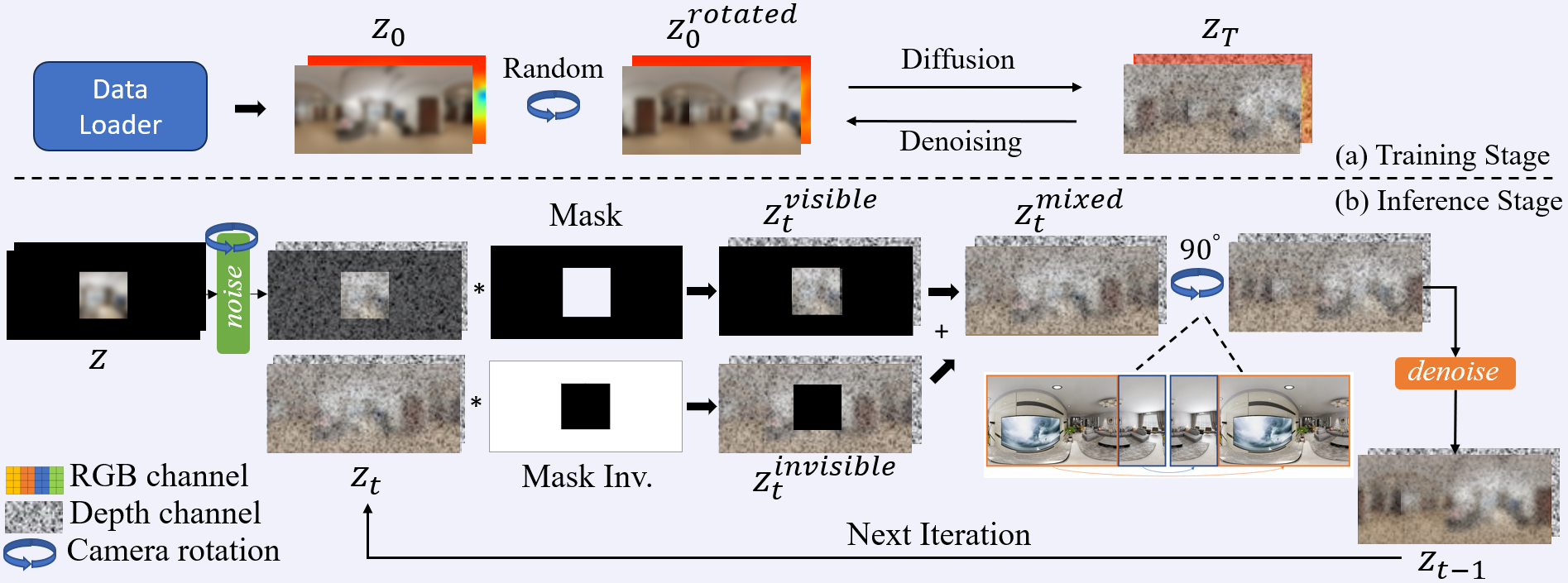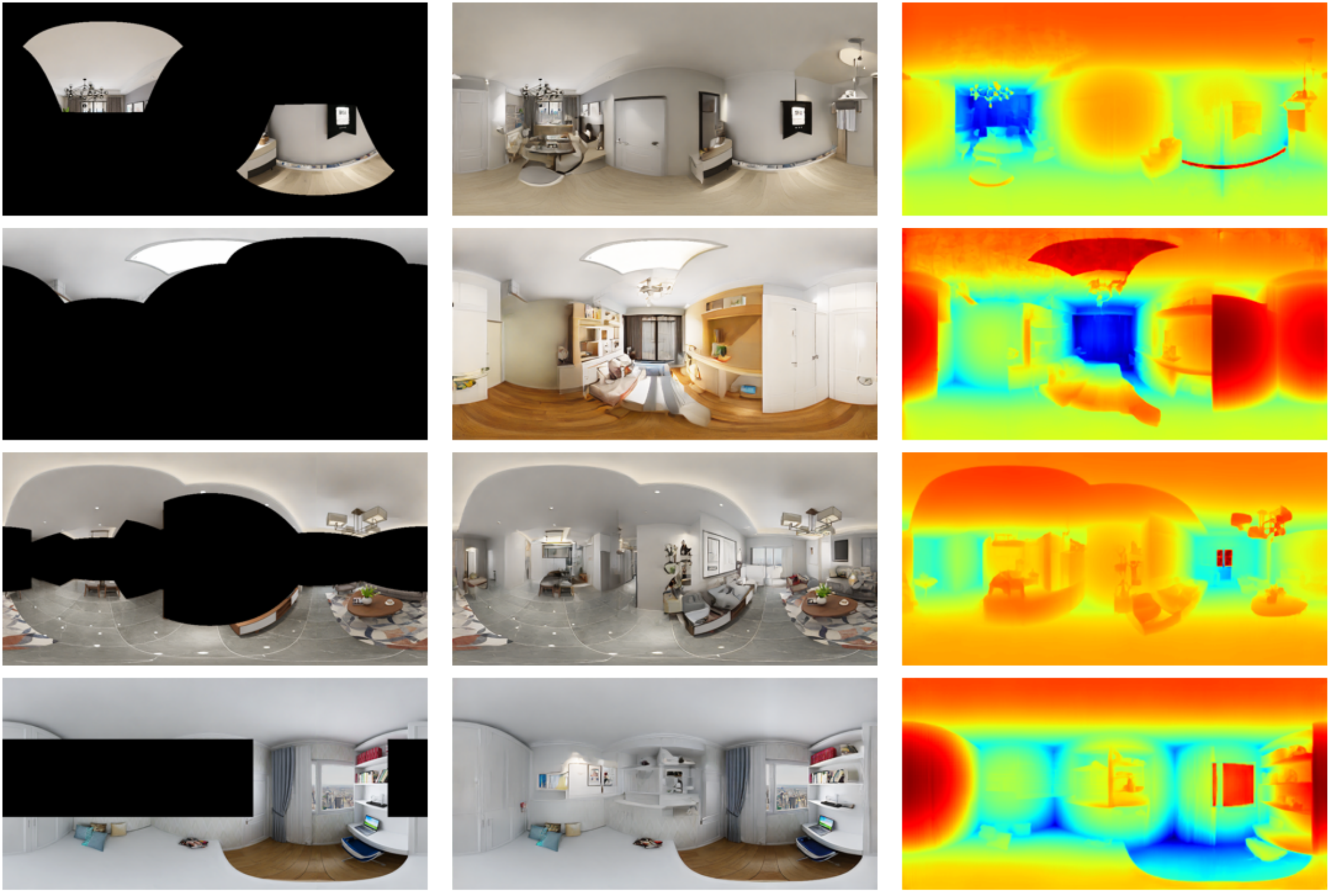Generating complete 360° panoramas from narrow field of view images is
ongoing research as omnidirectional RGB data is not readily available. Existing GAN-based
approaches face some barriers to achieving higher quality output, and have poor
generalization performance over different mask types. In this paper, we present our
360° indoor RGB panorama outpainting model using latent diffusion models (LDM),
called PanoDiffusion. We introduce a new bi-modal latent diffusion structure that utilizes
both RGB and depth panoramic data during training, which works surprisingly well to outpaint
depth-free RGB images during inference. We further propose a novel technique of introducing
progressive camera rotations during each diffusion denoising step, which leads to substantial
improvement in achieving panorama wraparound consistency. Results show that our PanoDiffusion
not only significantly outperforms state-of-the-art methods on RGB-D panorama outpainting by producing
diverse well-structured results for different types of masks, but can also synthesize high-quality depth
panoramas to provide realistic 3D indoor models.
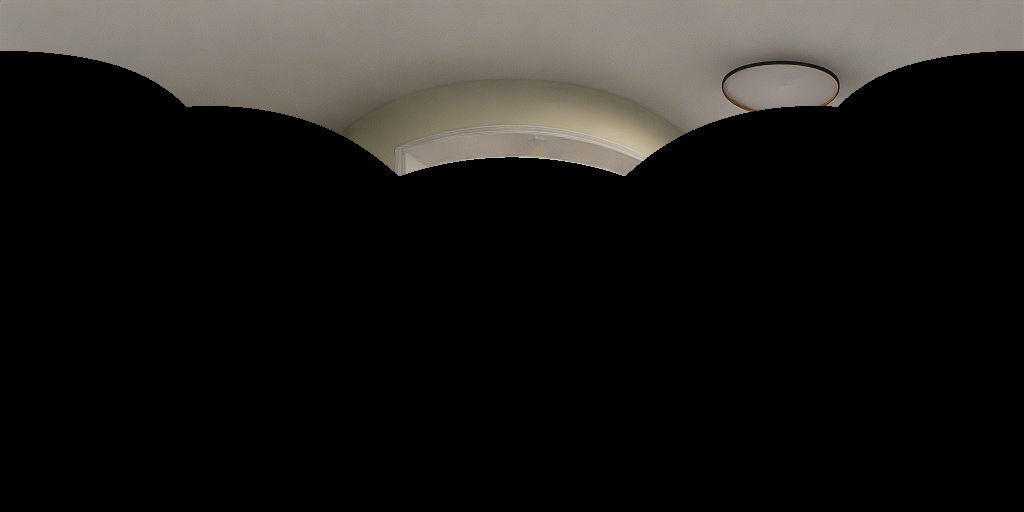
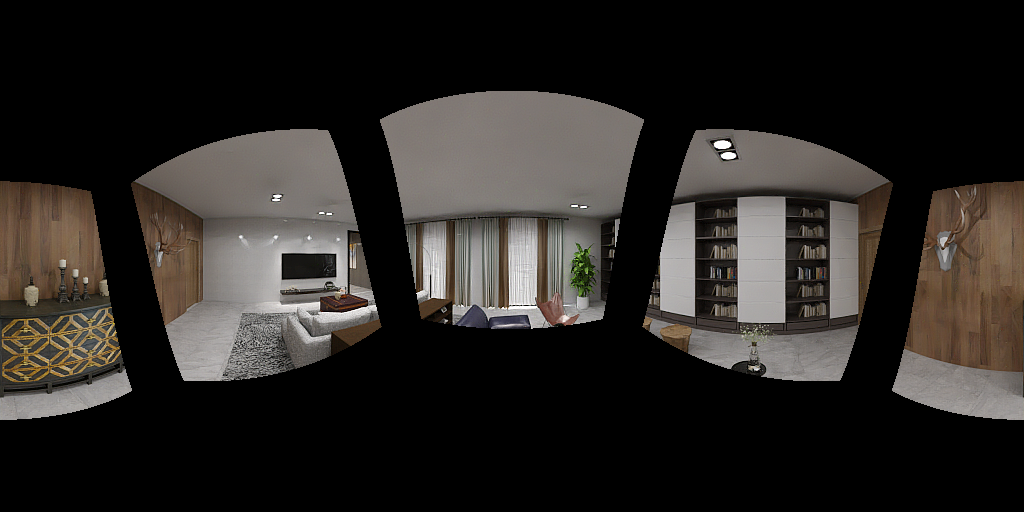
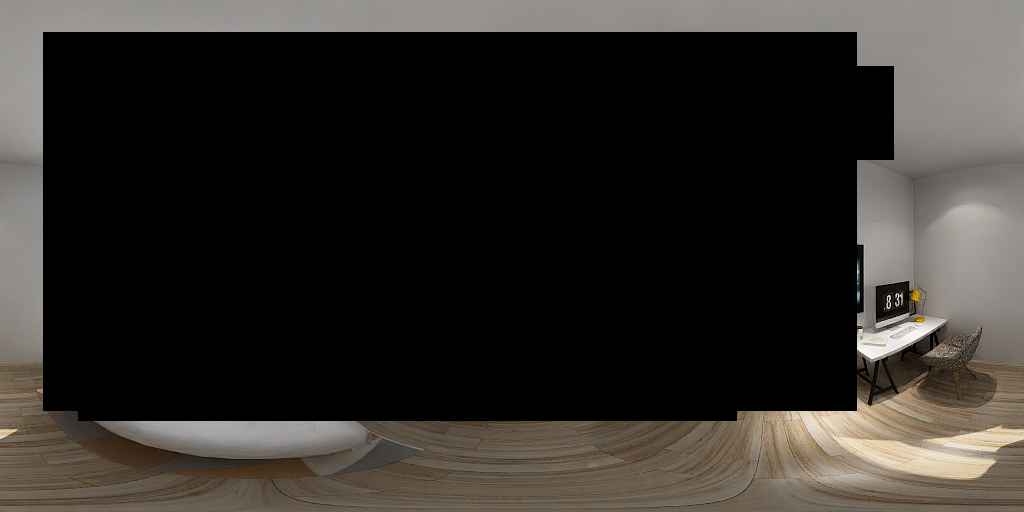
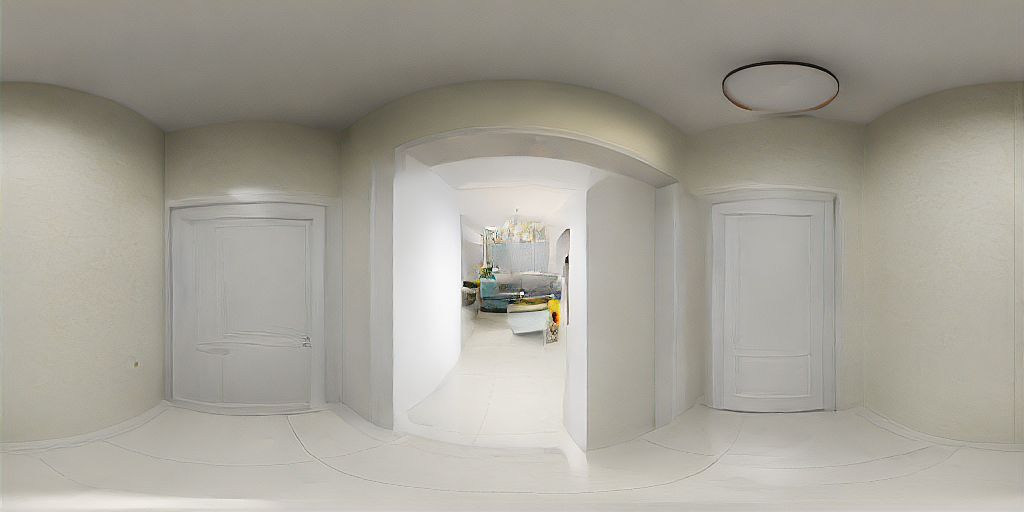
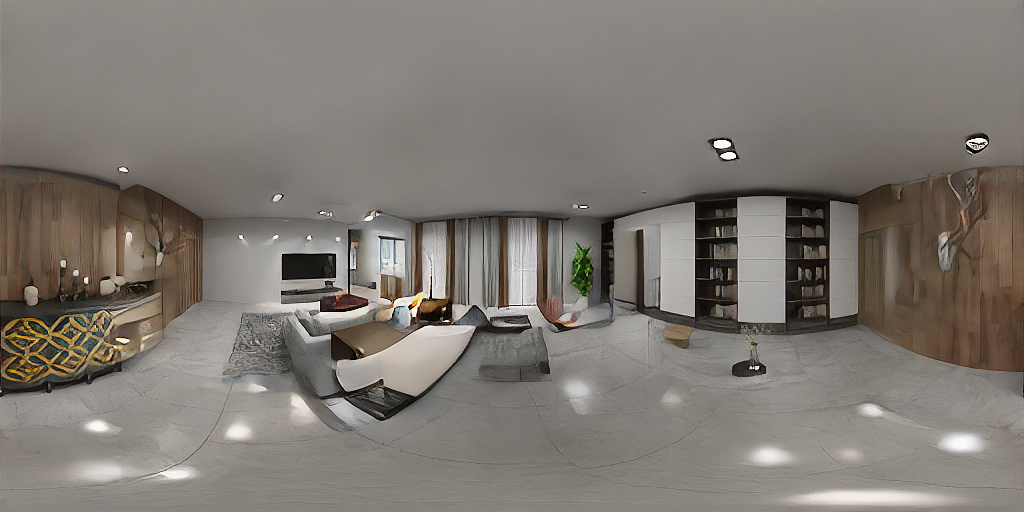
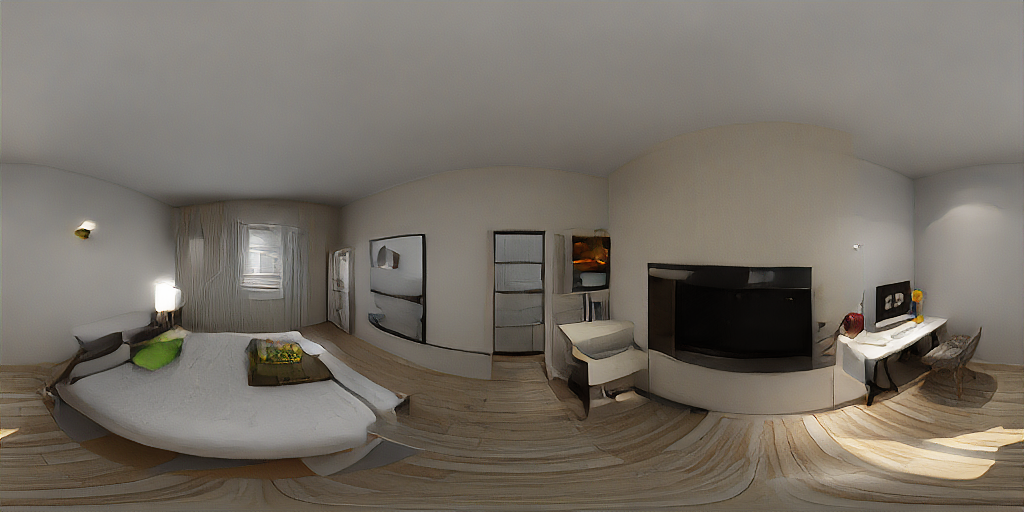
 Model Designs
Model Designs
